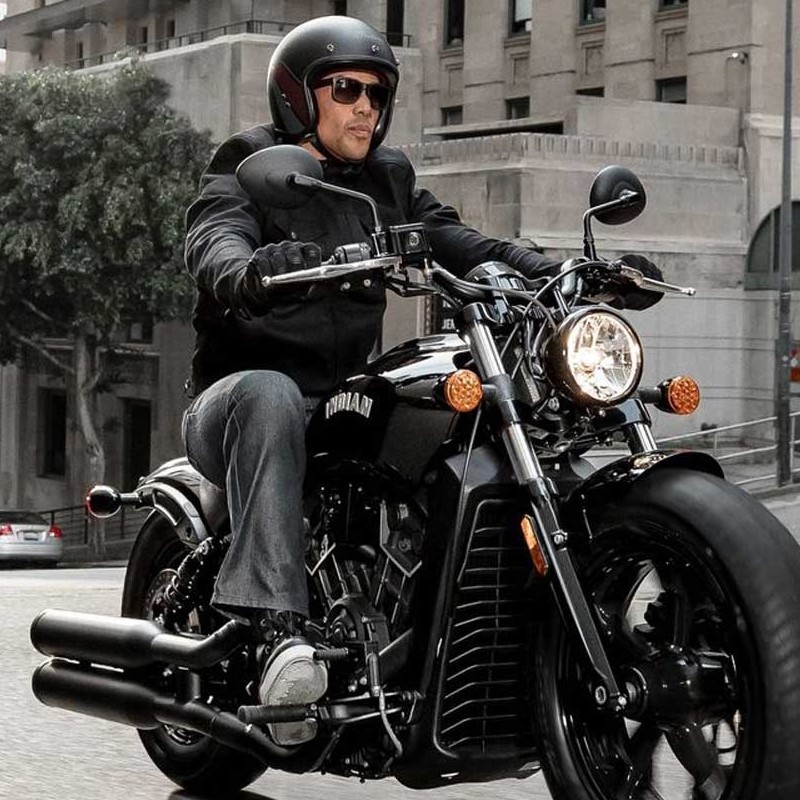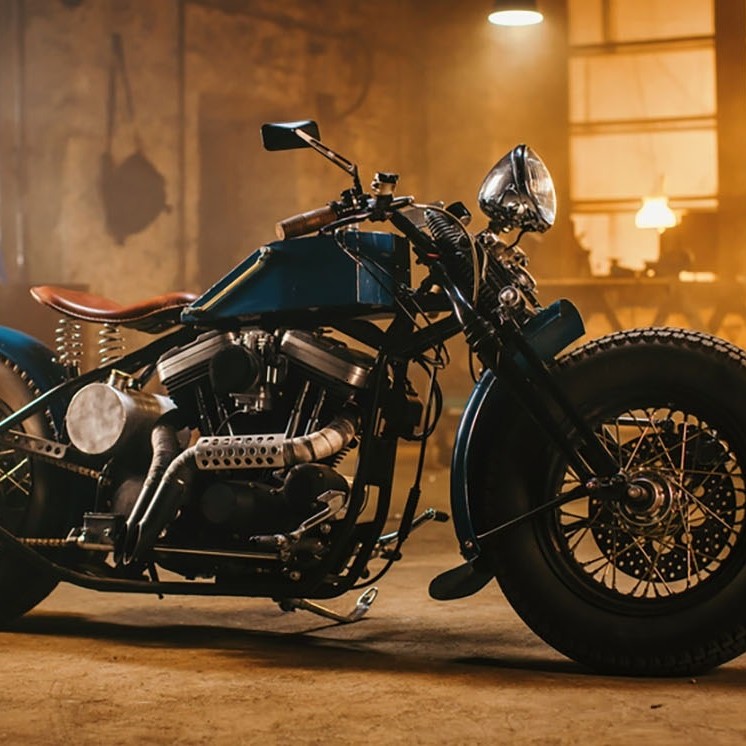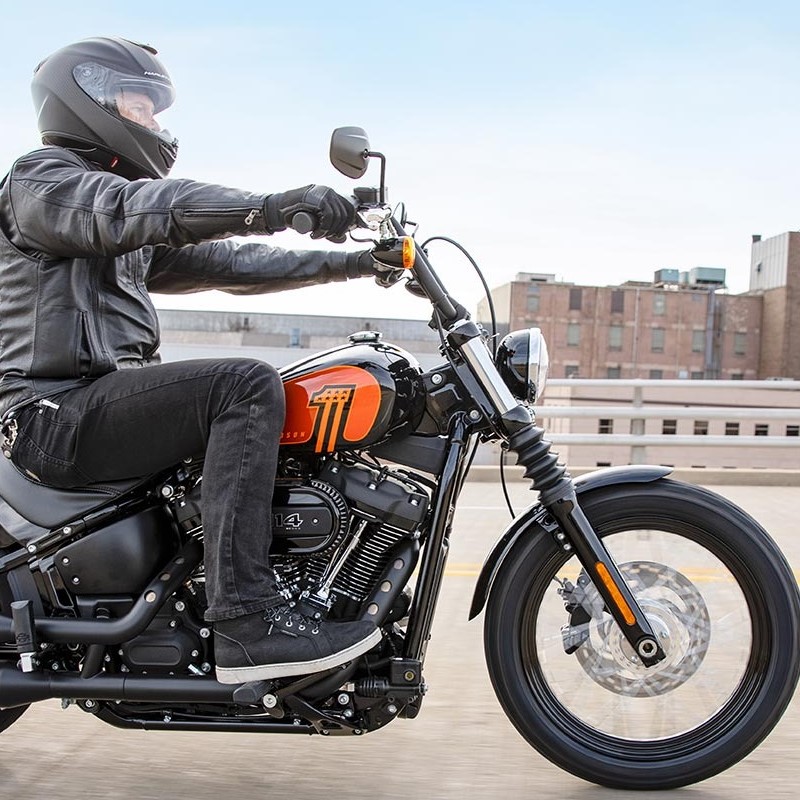Mar 3, 2025
What Is a Motorcycle Bobber: An In-Depth Exploration
History of the Motorcycle Bobber
The motorcycle bobber has a rich history that dates back to the post-World War II era. Soldiers returning home sought simplicity and speed in their motorcycles. They started to strip off unnecessary parts that did not contribute to performance. Fenders got trimmed or removed. Seats became smaller. The result was a lighter, faster bike – the original bobber. This minimalist trend caught on fast among riders who preferred a raw riding experience.
Bobbers were the forerunners of custom motorcycles. Each one was unique. Riders expressed their individuality through their bikes. The focus was on stripping down a bike to its bare essentials. Anything non-essential went away. This pure form of customization emphasized function over form. Yet, over time, the distinct look of bobbers became recognized as a style in its own right.
The term ‘bobber’ itself comes from the practice of ‘bobbing’ or shortening the fender, which was one of the first steps in creating the unique bobber silhouette. Classic motorcycle brands, such as Harley-Davidson and Indian Motorcycles, became popular bases for bobber projects due to their structure and style. Over the decades, the desire to build a motorcycle bobber spread globally, influencing various cultures and bike builders everywhere.
Today, the motorcycle bobber remains a symbol of customization freedom. It embodies a blend of history, mechanics, and personal expression. When we talk about what is a motorcycle bobber, we must nod to its storied past. It is this history that not only defines the bobber’s physical characteristics but also its spirit of independence and rebellion.
Key Characteristics of Bobber Motorcycles

When defining what is a motorcycle bobber, we must look at its key features. Bobbers stand out through their stripped-down aesthetics and performance-focused modifications. Here are the essential characteristics that define a bobber motorcycle:
- Simplified Design: Bobber motorcycles showcase minimalism. They lack parts that do not add to performance. Typically, they have no fairings, smaller fenders, and a single seat.
- Lowered Profile: Bobbers often feature a lowered stance. This is achieved by shortening the rear suspension or modifying the frame. The result is a bike that is closer to the ground.
- Customized Fenders: One of the trademarks of a bobber is the ‘bobbed’ fender. Fenders are usually trimmed or removed in the rear. This contributes to the bobber’s distinctive look.
- Exposed Engine and Frame: With the removal of certain parts, the bobber proudly displays its engine and frame. It adds to the raw, mechanical appeal.
- Vintage Influence: Many bobbers draw inspiration from classic styles. They mix old-school charm with modern performance.
These features contribute to the bobber’s unique balance of form and function. They offer a riding experience focused on the essential joys of motorcycling. This is where style meets speed, history meets customization, and each bobber tells a story of personal freedom.
The Bobber Aesthetic: Style and Customization
The bobber aesthetic goes far beyond mere functionality. It is about creating a bike with a unique personality. Motorcycle enthusiasts choose to build a bobber for its distinctive style. Here are key aspects that highlight the bobber aesthetic and customization:
- Minimalistic Look: The beauty of a bobber lies in its simplicity. Riders often remove excess bodywork and trim to showcase the bike’s raw look.
- Personal Touch: Each bobber is a reflection of its builder. Owners add personal touches, from custom paint jobs to handcrafted parts.
- Classic Colors and Finish: Bobbers often feature classic color schemes. These include black, matte, and vintage finishes that pay homage to their roots.
- Unique Seating: The single seat of a bobber sets it apart. It offers a solitary and focused riding experience.
- Performance Tweaks: While style is key, performance tweaks are common. Riders might add better shocks, brakes, or exhaust to enhance the ride.
- DIY Culture: Building a bobber involves hands-on customization. It attracts those who enjoy DIY projects and putting their skills to the test.
The bobber aesthetic is customizable to each rider’s vision. It embodies both a nod to the past and a canvas for individual expression. The statement ‘what is a motorcycle bobber’ is as much about its stripped-down look as it is about the rider’s choice to personalize their machine. Each one tells its own story of creativity and passion for the open road.
Step-by-Step Guide to Bobber Conversion

Turning a stock motorcycle into a personalized bobber can be a rewarding project. Here’s a simple guide to get you started on your bobber conversion journey. Remember, each step should reflect your personal style and the ‘what is a motorcycle bobber’ ethos of minimalism and performance.
- Choose the Right Base Bike: Look for models that fit the classic bobber style. Popular choices often include older motorcycles with simpler engineering.
- Strip Unneeded Parts: Remove items that don’t contribute to performance or aesthetics. This includes the front fender, excess handlebar controls, side covers, and sometimes even the stock exhaust.
- Bob the Fenders: Shorten the rear fender or remove it entirely for that signature bobber appearance. Keep the front fender small or remove it.
- Adjust the Seat: Replace the stock seat with a single bobber-style saddle. This enhances the classic look and improves rider connection to the bike.
- Lower the Suspension: You might choose to lower the bike’s suspension or modify the frame for a closer ride to the ground.
- Customize the Tanks and Handlebars: Consider reshaping or swapping out the fuel tank and modifying the handlebars for a distinct look and improved riding posture.
- Expose the Engine and Frame: Without the extra parts, the engine and frame become focal points. Clean these areas and consider adding high-quality finishes.
For each change you make, consider both form and function. Keep the ‘what is a motorcycle bobber’ philosophy in mind. Every modification should aim to strip down the bike to its basics while amplifying its raw character. With these steps, you’ll forge a deeper connection with your ride and enjoy a true custom motorcycle experience.
Pros and Cons of Owning a Bobber
Owning a motorcycle bobber comes with its unique set of advantages and challenges. Here are the main pros and cons of making a bobber your ride of choice.
Pros of Owning a Bobber
- Style Statement: A bobber makes a bold personal statement. It is the pinnacle of custom style.
- Minimalism: The simplicity of a bobber can mean fewer maintenance tasks.
- Connection to the Road: Lowered suspension offers a closer feel to the pavement.
- Weight Reduction: Stripping parts leads to a lighter bike and potentially faster accelerations.
- Unique Community: Join a group of passionate riders who appreciate the art of a bobber motorcycle.
Cons of Owning a Bobber
- Comfort: The single seat and stiffer suspension can be less comfortable on long rides.
- Practicality: Bobbers are not made for carrying passengers or much cargo.
- Weather Protection: With minimal coverings, riders face the elements more directly.
- Resale Value: Custom bikes can be harder to sell as they are tailored to individual tastes.
- Safety Features: Some safety features might be removed during the bobbing process.
When contemplating what is a motorcycle bobber and if it’s right for you, weigh these factors. Your decision should align with your style preferences and how you plan to use the bike.
Popular Motorcycle Models for Bobber Projects
Choosing the right motorcycle model is crucial for your bobber project. The best models are those with a simple design, which can be easily modified. Here are popular choices among bobber enthusiasts:
- Harley-Davidson Sportster: Known for its rugged frame and versatile design; a common pick for bobber conversions.
- Yamaha XS650: Offers a reliable engine and a classic style that’s favored by custom builders.
- Honda CB Series: These bikes provide a good foundation and have been popular for decades, making them a trustworthy choice.
- Triumph Bonneville: A British classic with a timeless look, perfect for a vintage-styled bobber.
- Kawasaki W Series: Provides a retro feel and straightforward mechanics, suitable for bobber customization.
Each of these models presents an opportunity to create a unique bobber. Think about availability, cost, and ease of modification when picking your base bike. Remember, what is a motorcycle bobber if not a reflection of your personal style? These models are just starting points on the journey to crafting your own bobber masterpiece.
Legal and Safety Considerations for Bobbers

When modifying a motorcycle into a bobber, legal and safety aspects are crucial. Let’s delve into these topics to ensure your bobber meets all requirements.
Legal Requirements
Every region has its own legal regulations for motorcycles. For a bobber, specific points must be checked:
- Registration and Inspection: Make sure your bobber is registered. Pass any required inspections.
- Lighting: Ensure your bobber has proper headlights, tail lights, and indicators.
- License Plate: Your plate must be visible. Check local laws on placement and size.
- Exhaust System: Some areas have noise limits. Your exhaust should comply.
- Mirrors and Reflectors: Check that your bobber has the needed mirrors and reflectors.
Do research or consult with local authorities. This will help you avoid legal issues.
Safety Features
Bobbers often sacrifice some safety features for style. But safety should remain a priority:
- Brakes: Install high-quality brakes. Test them regularly for reliability.
- Tires: Choose the right tires for grip and stability. Keep them in good condition.
- Suspension: While bobbers have lower suspension, make sure it’s still safe. It should handle road imperfections well.
- Riding Gear: Always wear a helmet. Invest in other protective gear like jackets, gloves, and boots.
Though bobbers highlight minimalism, don’t cut corners on safety. Combining legal compliance and safety measures makes sure you enjoy a worry-free ride.
Maintenance and Upkeep of a Bobber Motorcycle
Caring for a bobber motorcycle involves specific tasks to keep it running smoothly. Since bobbers have minimal parts, each component plays a crucial role. Here’s how you can maintain your bobber motorcycle to ensure longevity and a good riding experience.
- Regular Engine Checks: Inspect the engine often for leaks and wear. Change the oil as recommended.
- Tire Maintenance: Keep tires properly inflated. Check for tread wear and replace tires when needed.
- Brake Care: Look at brake pads and discs regularly. Replace them before they wear out too much.
- Battery Health: Maintain the battery. Check connections and charge it, especially if not riding for a while.
- Suspension System: Although bobbers have simpler suspensions, they still need checks. Ensure they’re functioning correctly.
- Clean Components: With an exposed engine and frame, dirt can accumulate. Clean the bike to prevent corrosion.
- Bolt Tightening: Vibration can loosen bolts. Tighten them often to avoid parts falling off.
- Rust Prevention: Treat metal surfaces to prevent rust, particularly if you’re in a wet climate.
- Fuel System: Clean the fuel system. This includes the carburetor or fuel injectors and the tank.
For those wondering ‘what is a motorcycle bobber,’ maintenance is all about focus on essentials. Treat each part with care. This will help keep your bobber in peak condition for the road.
More Details